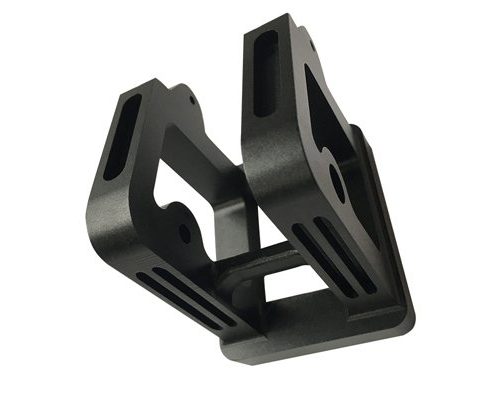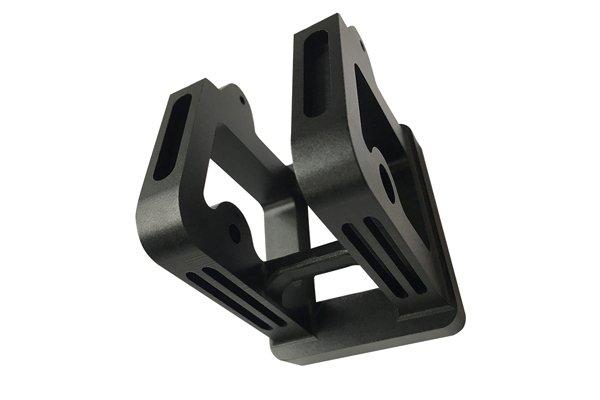Aluminum is everywhere. From the cans of your favorite soda to the frame of your smartphone, this versatile metal permeates our daily lives. But have you ever stopped to wonder what makes aluminum so unique? One fundamental aspect is its melting point, which plays a critical role in everything from its manufacturing processes to its strength and sustainability. Today, we’re diving deep into the world of aluminum—exploring its melting point, its implications for strength, and how it can contribute to sustainable manufacturing. So, grab your virtual safety goggles; we’re about to embark on an enlightening journey!
The Heart of Aluminum: Understanding Its Melting Point
Before we jump into the nitty-gritty, let’s get one thing straight—what do we mean by “melting point”? Picture this: you’re cooking a piece of chocolate. As you apply heat, it starts to soften until it reaches a point where it becomes liquid. Similarly, the melting point of aluminum is the temperature at which it transitions from a solid state to a liquid state. For aluminum, this magic number hovers around 660.3 degrees Celsius (or 1220.5 degrees Fahrenheit).
Now, why is this number so crucial? The melting point influences how aluminum is processed and used in various applications. Higher melting points generally mean higher strength at elevated temperatures, which is particularly beneficial in aerospace and automotive applications where materials face extreme conditions.
The Science Behind Strength: How Melting Point Affects Aluminum’s Performance
The relationship between the melting point and the strength of aluminum is a captivating tale filled with twists and turns. If you think of melting point as a starting line in a race, the type of aluminum alloy you use can significantly affect performance. But what does that mean in practical terms?
Aluminum is not just a single element; it’s often combined with other metals like manganese, copper, and magnesium to create alloys. Each of these alloys has its distinct melting point and, consequently, different mechanical properties. For instance, 6061 aluminum alloy—a highly popular choice in manufacturing—boasts excellent weldability and corrosion resistance due to its relatively higher melting point. This means it retains stronger structural integrity, even when facing heat.
So, can we boil it down to a simple rule? In general, aluminum alloys with higher melting points tend to have better overall strength and performance. It’s a beauty like no other; while seemingly delicate, the right aluminum alloy can prove itself as a stout warrior on the battlefield of engineering.
Melting Point and Its Role in Manufacturing Processes
Okay, so aluminum’s melting point affects its strength—check. But how does this translate to manufacturing? Let’s unravel that together.
One of the most common methods of processing aluminum is casting. Here’s where the melting point really shows its colors. If the molten aluminum isn’t poured into molds at the right temperature, the result can be subpar. Think of it as baking a cake; if the oven isn’t hot enough, you’re left with a gooey mess instead of a delightful confection.
On the other hand, when machining aluminum, the melting point becomes the ultimate guide. For instance, during CNC machining—a popular method for shaping metal—the idea is to keep the material below its melting point while applying enough force to remove material without causing the workpiece to warp.
Sustainability: Aluminum’s Melting Point and Eco-Friendly Manufacturing
Now that we’ve covered aluminum’s melting point and its implications for strength and manufacturing, let’s delve into one of the most talked-about topics today: sustainability. As concerns about climate change and resource depletion continue to rise, manufacturers are increasingly searching for eco-friendly materials. This is where aluminum shines like a beacon.
Did you know that aluminum is 100% recyclable? That’s right! In fact, recycling aluminum saves about 90% of the energy required to produce new aluminum. This energy efficiency ties back to its melting point. When recycled, aluminum can be melted down and reformed at significantly lower temperatures than the energy-intensive processes required to extract it from ore. Imagine slashing your energy consumption while still producing a product that meets all your strength needs. It’s like finding a shortcut on a long, winding road.
The Place of Zinc and Other Elements in Aluminum Alloys
If you thought aluminum kept all the fun to itself, think again! The melting point and strength of aluminum can be significantly influenced by the addition of other materials, primarily zinc. Alloys like Zamak (zinc-aluminum alloy) provide that extra oomph, bringing forth improved performance while maintaining the overall desirable properties of aluminum.
When zinc is added to aluminum, it can alter its melting point, often making it a little lower. In terms of end-use, this means that you can achieve specific qualities in aluminum products—like a tailored suit that fits just right!

In construction and automotive applications, this tailored approach vanishes doubt about using aluminum alloys. It’s similar to customizing a vehicle for off-roading versus city commuting; you’d want different materials for tackling different challenges.
Navigating the Future: The Application of Aluminum in Various Industries
Now that we’ve dissected the science behind aluminum and its melting point, let’s explore where this fascinating metal finds itself in action. From construction to aerospace, aluminum’s applications are virtually limitless!
- Aerospace Industry:
Here, weight matters greatly. Aluminum’s lightweight nature, combined with its strength, makes it a go-to material for aircraft manufacturers. Its melting point ensures it can handle high-stress environments, ranging from takeoff to cruising altitudes.
- Automotive Sector:
Cars are increasingly being designed with aluminum frames to decrease weight and improve fuel efficiency. The melting point and strength of aluminum mean that manufacturers can create crash-tested components that are robust yet lightweight. It’s as if you’ve found the perfect balance between safety and performance on the road.
- Construction:
The buildings we live and work in often incorporate aluminum for its durability and aesthetic appeal. With the right aluminum alloys, architects can create striking designs without compromising on strength, much like a graceful swan gliding on water—beautiful yet sturdy.
- Consumer Products:
From kitchen utensils to electronic devices, aluminum’s versatility blesses many household items. The lightweight yet strong properties make it a favorite, just like a multi-tool that simplifies your life without weighing you down.
The Bright Future of Aluminum
As we wrap up, it’s apparent that aluminum’s melting point brings a wealth of insights into its usability for various industries. As we leap into a future guided by eco-consciousness, aluminum remains in the spotlight not just for its physical properties, but for its ability to be recycled and reused—a true champion for sustainability.
Imagine a world where every soda can, every vehicle frame, and every airplane wing could find new life rather than ending up in a landfill. With aluminum, we’re already on that path. So, the next time you crack open an aluminum beverage or admire the sleek aluminum design of a product, remember the intricate processes that allow aluminum to shine in our modern world.
In a way, understanding aluminum’s melting point is key—not just for manufacturers but for us as consumers, too. The more we know, the more we can appreciate the choices we make in supporting sustainable practices and innovative designs. If aluminum is the knight in shining armor of materials, let’s don our armor and join the quest for a better, greener future!
In conclusion, aluminum’s melting point might seem like just another technical detail, but it is, in fact, a cornerstone of its wide-ranging applications and its vital role in sustainable manufacturing. As we continue to innovate and discover, let’s celebrate aluminum—not just for what it is, but for what it symbolizes: a more sustainable and efficient future.
—
- By following this detailed, conversational, and engaging style, I hope to have provided an insightful exploration of aluminum, combining science with everyday applications. Whether you’re an engineer, an environmentally-conscious consumer, or someone simply curious about the materials that make modern life possible, aluminum offers a fascinating glimpse into the intersection of technology, sustainability, and our everyday lives.


